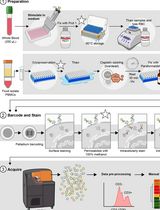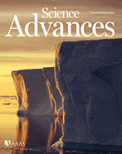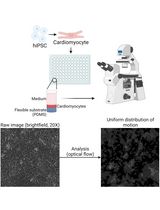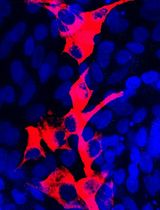- EN - English
- CN - 中文
A Simple and Robust Protocol for in vitro Differentiation of Mouse Non-pathogenic T Helper 17 Cells from CD4+ T Cells
一种简单稳定的用小鼠CD4+ T细胞体外分化非致病性T辅助17细胞的方法
发布: 2021年05月20日第11卷第10期 DOI: 10.21769/BioProtoc.4029 浏览次数: 5582
评审: Guangyong PengRAMESH KUDIRAMichael EnosAnonymous reviewer(s)

相关实验方案

用于比较人冷冻保存 PBMC 与全血中 JAK/STAT 信号通路的双磷酸化 CyTOF 流程
Ilyssa E. Ramos [...] James M. Cherry
2025年11月20日 2137 阅读
Abstract
Functional and mechanistic studies of CD4+ T cell lineages rely on robust methods of in vitro T cell polarization. Here, we report an optimized protocol for in vitro differentiation of a mouse non-pathogenic T helper 17 (TH17) cell lineage. Most of the previously established protocols require irradiated splenocytes as artificial antigen presenting cells (APC) for TCR activation. The protocol described here employs plate-bound antibodies and a TH17-polarizing cytokine cocktail to activate and differentiate naïve CD4+ T (Tnai) cells, reflecting a simple and robust protocol for in vitro TH17n differentiation. Using T cells that are genetically engineered with an IL-17 reporter, this protocol may enable the rapid production of a pure population of IL17-expressing CD4+ T cells for system biology studies and high-throughput functional screening.
Keywords: TH17 (TH17)Background
Naive CD4+ T cells circulate through secondary lymphoid tissues after emerging from the thymus. The activation of naïve CD4+ T cells, by antigen-presenting cells that offer cognate antigens, initiates various differentiation programs that lead to the development of highly specialized T helper (TH) cell lineages (Bhaumik and Basu 2017). TH17 cells are a subset of pro-inflammatory TH cells defined by the production of interleukin 17 (IL-17) (Hartigan-O'Connor et al., 2011). To date, at least two different types of TH17 have been described. Type 1, pathogenic or disease-inducing TH17 (TH17p) cells, are induced by the combined IL-6, IL-1β, and IL-23 cytokine stimulation, and produce IL-17 together with IFN-γ, which results in tissue inflammation and autoimmunity (Cua et al., 2003; Awasthi et al., 2009; Jager et al., 2009; Lee et al., 2012; Lee et al., 2014). Type 2, non-pathogenic TH17 (TH17n) cells, are induced by TGF-β and IL-6 in vitro, and produce IL-17 but are not able to induce effective tissue inflammation or autoimmunity. TH17n cells play a protective role in mucosal tissues, promoting tissue homeostasis as well as maintaining barrier function (Bettelli et al., 2008; Ouyang et al., 2008; Korn et al., 2009; Guglani and Khader 2010; Gaffen et al., 2011). Here, we report a simple and robust protocol for generating non-pathogenic TH17 (TH17n) cells in vitro.
Materials and Reagents
48-well cell culture plates (ASi Alkali Scientific Inc., catalog number: TP9048)
CellProTM 70 μm cell strainers (ASi, Falcon®, catalog number: MT4070)
1 ml syringe (BD Tuberculin Slip Tip, catalog number: 9189520)
50 ml centrifuge tubes (ASi, catalog number: C5602)
15 ml centrifuge tubes (ASi, catalog number: C5600)
C57BL/6J mice (The Jackson Laboratory, catalog number: 000664)
C57BL/6-IL17atm1Bcgen/J mice (The Jackson Laboratory, catalog number: 018472)
RBC lysis buffer 10× (Biolegend®, catalog number: 420302)
Cell culture grade water (HyPureTM, catalog number: SH30529.02)
MojoSortTM Mouse CD4 Naïve T Cell Isolation Kit (Biolegend®, catalog number: 480040)
Coating antibodies:
Anti-mouse CD3ϵ (clone 145-2C11, Bio X Cell, catalog number: BE0001-1)
Anti-mouse CD28 (clone 37.51, Bio X Cell, catalog number: BE0015-1)
Staining antibodies:
APC anti-mouse CD4 (clone RM4-5, Biolegend, catalog number: 100516)
PE/Cy7 anti-mouse IL-17A (clone TC11-18H10.1, Biolegend, catalog number: 506922)
Cell Stimulation Cocktail Plus Protein Transport Inhibitors (Invitrogen eBioscienceTM, catalog number: 00-4975-93)
FoxP3/Transcription Factor Staining Buffer Set (Fixation Diluent, Fixation Reagent, Permeabilization kit, eBioscienceTM, catalog number: 00-5523-00)
RPMI 1640 1× with L-glutamine (Corning, catalog number: 10-040-CV)
Fetal bovine serum (FBS) (ATLANTA biologicalsTM, R&D SYSTEMS, catalog number: S12450)
L-glutamine 200 mM (Corning, catalog number: 25-005-CI)
Penicillin-streptomycin solution (PS) 100× (Corning, catalog number: 30-002-CI)
Sodium pyruvate 100 mM (Corning, catalog number: 25-000-CI)
2-mercaptoethanol (ME) 1000× (Life Technologies, Gibco®, catalog number: 21985-023)
TH17 polarization cytokines and antibodies:
Recombinant Human TGF-β1 (PeproTech, catalog number: 100-21C)
Recombinant Murine IL-6 (PeproTech, catalog number: 216-16)
Anti-mouse IFN-γ (clone XMG1.2, Bio X Cell, catalog number: BE0055)
Anti-mouse IL-2 (clone JES6-1A12, Bio X Cell, catalog number: BE0043)
Anti-mouse IL-4 (clone 11B11, Bio X Cell, catalog number: BE0045)
Phosphate-buffered saline (PBS) 1× (Corning, catalog number: 21-040-CV)
Bovine serum albumin (BSA) (Fisher BioReagentsTM, catalog number: BP1600-100)
Ethylenediamine tetraacetate acid (EDTA) 0.5 M (Fisher BioReagentsTM, catalog number: BP2482-500)
Carboxyfluorescein succinimidyl ester (CFSE) (InvitrogenTM, catalog number: C1157)
Culture medium (see Recipes)
TCR-stimulation antibody mixture (see Recipes)
RBC lysis buffer (1×) (see Recipes)
MACS buffer (see Recipes)
TH17 polarization medium (see Recipes)
Staining buffer (see Recipes)
Equipment
NovoCyte (ACEA Biosciences)
Software
FlowJo software (BD Biosciences)
Procedure
文章信息
版权信息
© 2021 The Authors; exclusive licensee Bio-protocol LLC.
如何引用
Readers should cite both the Bio-protocol article and the original research article where this protocol was used:
- Kang, S., Wu, R. and Wang, R. (2021). A Simple and Robust Protocol for in vitro Differentiation of Mouse Non-pathogenic T Helper 17 Cells from CD4+ T Cells. Bio-protocol 11(10): e4029. DOI: 10.21769/BioProtoc.4029.
- Ruohan Wu*, Xuyong Chen*, Siwen Kang*, Tingting Wang, JN Rashida Gnanaprakasam, Yufeng Yao, Lingling Liu, Gaofeng Fan, Mark R. Burns, Ruoning Wang†. (2020). De novo synthesis and salvage pathway coordinately regulate polyamine homeostasis and determine T cell proliferation and function. Science Advances 6 (51): eabc4275.
分类
免疫学 > 免疫细胞功能 > 细胞因子
免疫学 > 免疫细胞染色 > 流式细胞术
细胞生物学 > 细胞分离和培养 > 细胞分化
您对这篇实验方法有问题吗?
在此处发布您的问题,我们将邀请本文作者来回答。同时,我们会将您的问题发布到Bio-protocol Exchange,以便寻求社区成员的帮助。
Share
Bluesky
X
Copy link











